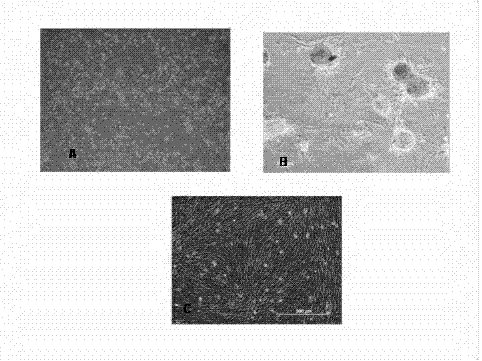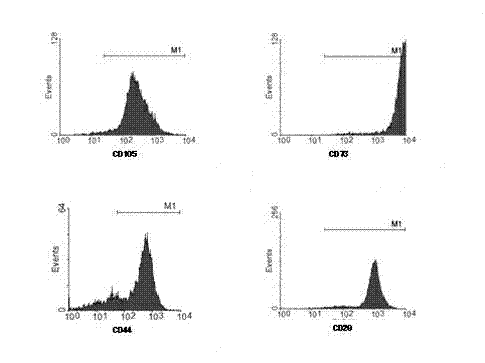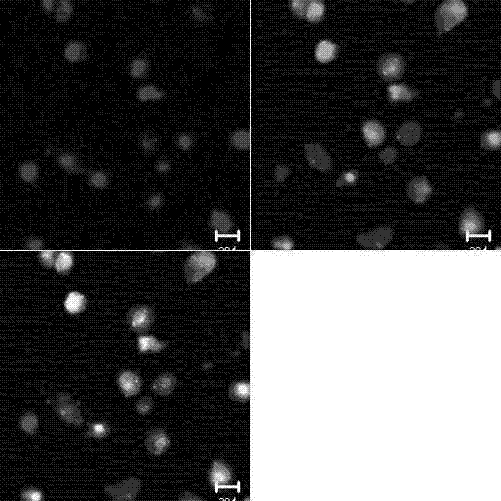Method for inducing umbilical cord mesenchymal stem cells to differentiate into endothelial cells
A technology of mesenchymal stem cells and endothelial cells, applied in the field of biomedicine, can solve the problems of low differentiation efficiency and achieve the effect of solving the low efficiency of cell differentiation
- Summary
- Abstract
- Description
- Claims
- Application Information
AI Technical Summary
Problems solved by technology
Method used
Image
Examples
Embodiment 1
[0032] Example 1 Preparation of cell culture medium containing paeoniflorin
[0033] According to the conventional method, prepare the endothelial cell conditioned medium containing paeoniflorin, wherein:
[0034] Paeoniflorin 0.25mg / L-50mg / L, ECGF1-100ng / ml, VEGF 50-100ng / ml, bFGF10-100ng / ml 5%DMEM.
[0035] The molecular formula of the paeoniflorin: C23H28O11, molecular weight: 480.45, has the structure of formula (I):
[0036]
[0037] (I).
[0038]
Embodiment 2
[0039] Example 2 Experiment of inducing differentiation of umbilical cord mesenchymal stem cells into endothelial cells
[0040] (1) Isolation of umbilical cord mesenchymal stem cells
[0041]Under sterile conditions, take about 5 cm of isolated umbilical cord tissue, wash it repeatedly with PBS containing 100 U / ml penicillin and 100 μg / ml streptomycin, cut it into pieces, add 0.1% collagenase, and digest it at 37°C for 1 hour. Pass through a 100-mesh sieve, collect the cell suspension, centrifuge at 100 Or / min for 10 min at room temperature, discard the supernatant; add the remaining tissue to 0.05% trypsin containing 0.02% EDTA, digest at 37°C for 1 hour, and pass through a 100-mesh sieve , collect the cell suspension, centrifuge at 100Or / min for 10min at room temperature, discard the supernatant; collect the cells, remove the red blood cells with red blood cell lysate, and resuspend the cells in mesenchymal stem cell medium containing 20% FBS and bFGF to prepare Single...
PUM
 Login to View More
Login to View More Abstract
Description
Claims
Application Information
 Login to View More
Login to View More - R&D
- Intellectual Property
- Life Sciences
- Materials
- Tech Scout
- Unparalleled Data Quality
- Higher Quality Content
- 60% Fewer Hallucinations
Browse by: Latest US Patents, China's latest patents, Technical Efficacy Thesaurus, Application Domain, Technology Topic, Popular Technical Reports.
© 2025 PatSnap. All rights reserved.Legal|Privacy policy|Modern Slavery Act Transparency Statement|Sitemap|About US| Contact US: help@patsnap.com



